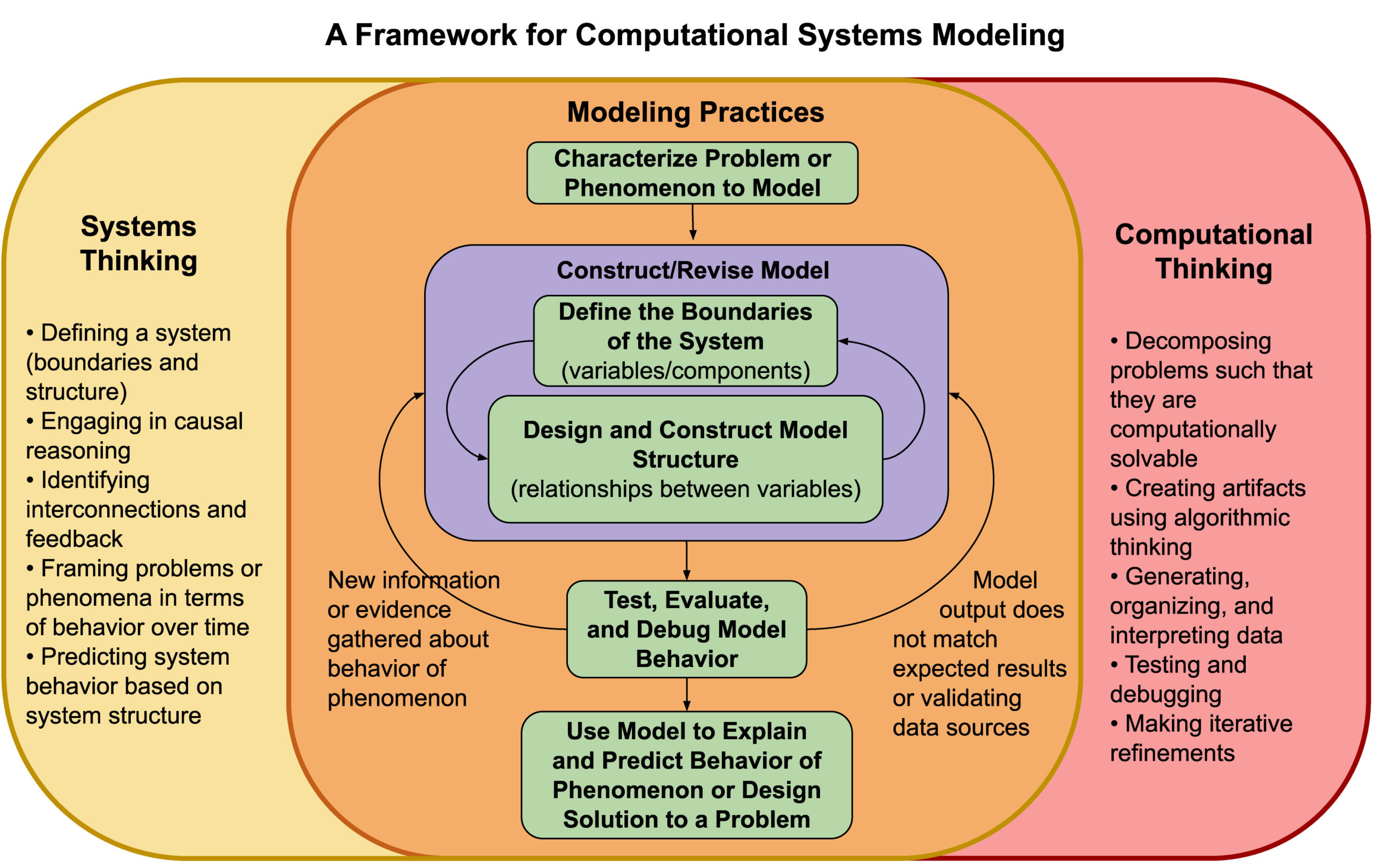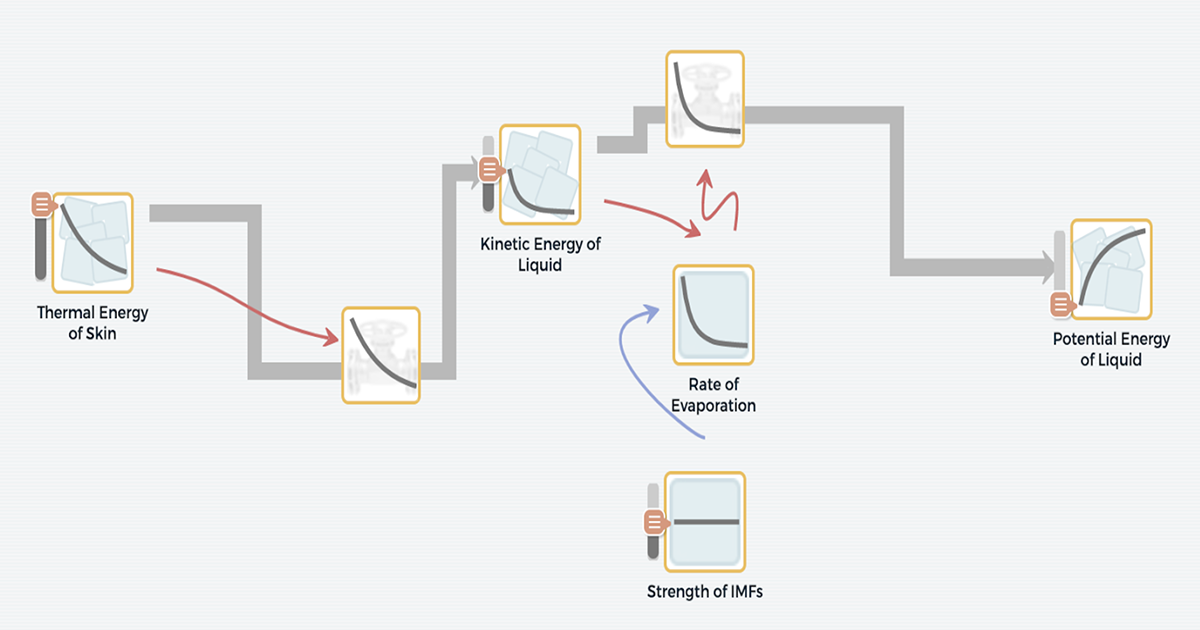Have you ever wondered why, even on a very hot day, you feel cold when coming out of a pool, lake, or sprinkler? The Multilevel Computational Modeling project, a collaboration with the CREATE for STEM Institute at Michigan State University, has developed a new curriculum unit called “Why do I feel colder when I am wet than when I am dry?” Our tools and curricula are designed to help high school students utilize both systems thinking and computational thinking as they explore phenomena through creating their own computational systems models.
The unit includes five investigations centered around the anchoring phenomenon of evaporative cooling, in particular how we lose thermal energy as liquid evaporates off our skin. Students conduct hands-on experiments, watch videos, interact with online simulations, and build and revise dynamic, time-based models with our SageModeler systems modeling tool.
In a new article in the March/April issue of The Science Teacher (PDF), we illustrate how a novel framework that merges systems thinking and computational thinking in the context of computational systems modeling informs both curriculum design and pedagogical practice for our evaporative cooling unit.
 The framework demonstrates the various aspects of systems thinking (yellow) and computational thinking (red) that support students as they engage in five core computational modeling practices (green).
The framework demonstrates the various aspects of systems thinking (yellow) and computational thinking (red) that support students as they engage in five core computational modeling practices (green).
Using contextualized examples from an authentic chemistry classroom, we provide examples for how teachers can support students in engaging with systems thinking and computational thinking as they build and revise models that explain the process of evaporative cooling. The article also serves as a template for how teachers of other science disciplines can integrate the framework into their classrooms.

An example of a student’s final evaporative cooling model built in SageModeler.
Try “Why do I feel colder when I am wet than when I am dry?” with your students. Sign up for a free teacher account on our STEM Resource Finder to access a comprehensive teacher guide with NGSS alignment, teacher tips, sample models, and more.